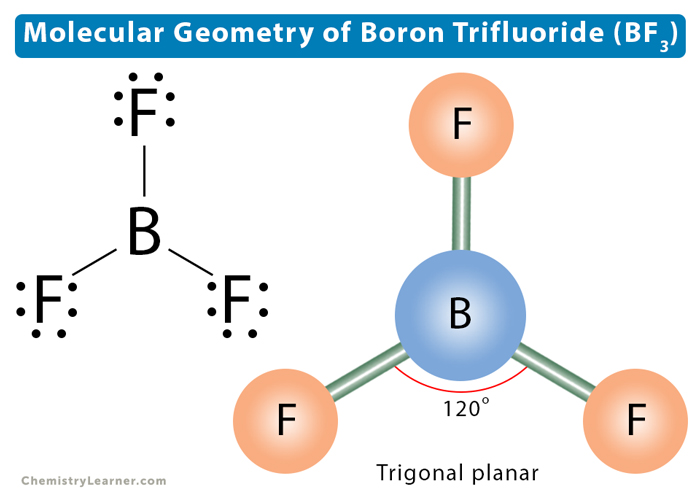Molecular Geometry of Boron Trifluoride (BF3)
The molecular formula of boron trifluoride (BF3) indicates that it has one boron (B) atom and three fluorine (F) atoms. Boron is located in Group 13 of the periodic table. It has three valence electrons. Fluorine is located in Group 17 and has seven valence electrons. Fluorine requires one electron to complete its octet and achieve the electron configuration of its nearest inert gas neighbor, neon. Boron and fluorine will combine to form three B-F single covalent bonds. Boron uses all its three valence electrons to bond with the three fluorine atoms, leaving no lone pairs of electrons. Each fluorine atom will have six lone pairs [1-4].
Lewis structure indicates how bonds are formed in BF3. Boron is the least electronegative of the two atoms. So, it will lie at the center of the molecule. Dash lines represent single covalent bonds. Dots on fluorine represent the lone pairs.
VSEPR theory is used to predict the shape of the BF3 molecule. According to this theory, the central boron atom has a steric number of 3. Boron has three valence atomic orbitals forming three sp2 hybridized orbitals – one 2s and two 2p orbitals. These three hybrid orbitals overlap with fluorine’s 2p orbitals.
The electron geometry of BF3 is trigonal planar. The shape is not distorted because there are no lone pairs on the central boron atom. The molecular geometry is the same as the electron geometry. For a trigonal planar structure, the bond angle is 120°. The VSEPR notation is AX3.
